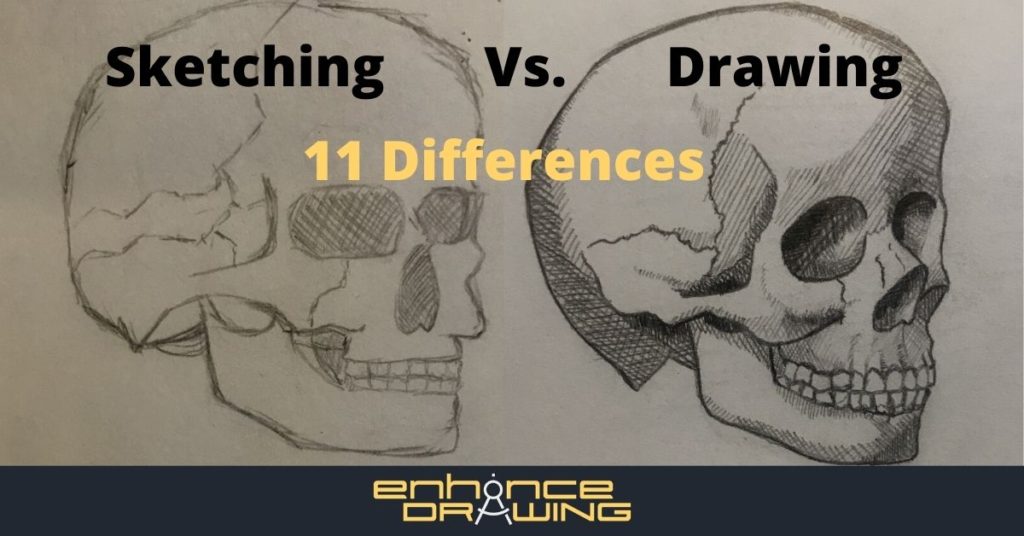
Drawing and sketching have such similar meanings they can confuse many artists. Yet, the reality is that sketching and drawing are very different from each other. But what exactly is their difference?
The main difference between sketching and drawing is that sketching is a quick, freehand illustration that focuses on general shapes and proportions. In contrast, drawing is a more careful and accurate process with the potential of producing very detailed pieces of art.
But that’s only the tip of how drawing and sketching are different. I’ve gathered the top ten differences between them so you can understand their concepts deeply.
1- Sketching Is Previous To Drawing
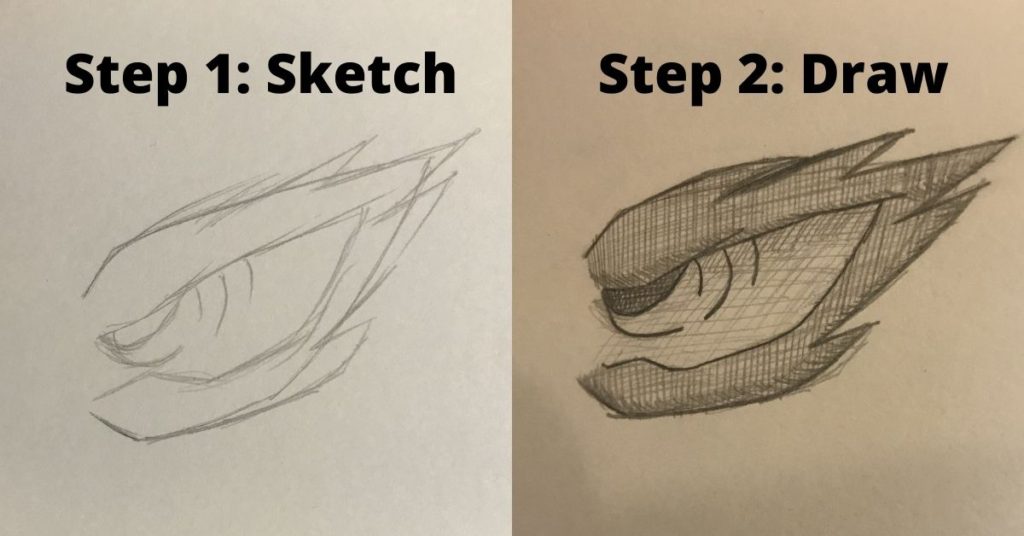
The first, main difference between drawing and sketching is that you first sketch before seriously drawing. Artists don’t usually skip sketching because they want their illustrations to be as accurate as possible to what they want them to be.
When you sketch, you press your pencil softly on the paper, so you can correct mistakes easily whenever you want. Whereas drawing is more like committing, every stroke is usually darker, and you apply more strength to it, making some errors harder to correct. Sometimes these errors are unfixable, and you have to start the drawing all over again.
In this drawing stage, you can see many circles and reference lines that help the artist keep proper proportions and shapes. Although you will also see many artists skipping sketching, they can only do it because they have drawn the subject so many times they have it stored in their visual library. More experienced artists would start sketching a drawing without circles or lines but instead drawing its contour immediately.
Sketching is especially important when you’re drawing something you have never drawn because you don’t yet understand it deeply. Sketching gives you the chance to experiment and help you see what lines help you compose an authentic illustration of what you’re drawing. The way you sketch or draw very much depends on your overall drawing experience and the subject you’re illustrating.
2- Sketching Is Loose And Drawing Is Detailed
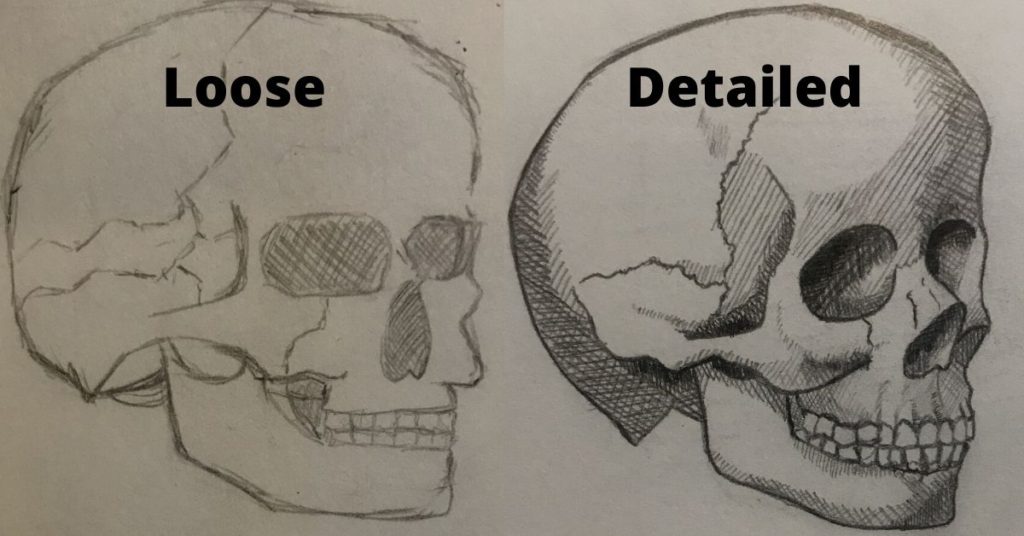
The second difference between sketching and drawing is their intention.
Sketching is artistic, free, and has almost zero to no constraints. The artist is exploring her mind through her strokes to make them art. Then, when she has captured the essence of what she wanted to draw, it’s time to focus on the details. Here’s when drawing comes in.
Drawing is thorough, more meticulous, and precise. Of course, art has no rules, and you can draw any way you want. But usually, drawing is the stage when you start to give your sketch a more pronounced form. You also start adding details like shading, texture, color, and value.
Many artists follow this process when they’re creating art. Very phew know what they want to draw previous to drawing it unless they’re drawing from reference or something they know exceptionally well. Just as one great artist once said:
“Inspiration exists, but it has to find you working.”
-Pablo Picasso
It is when sketching that your inner artist emerges. Drawing, on the other hand, represents your skills.
3- Sketches Take Less Time Than Drawings
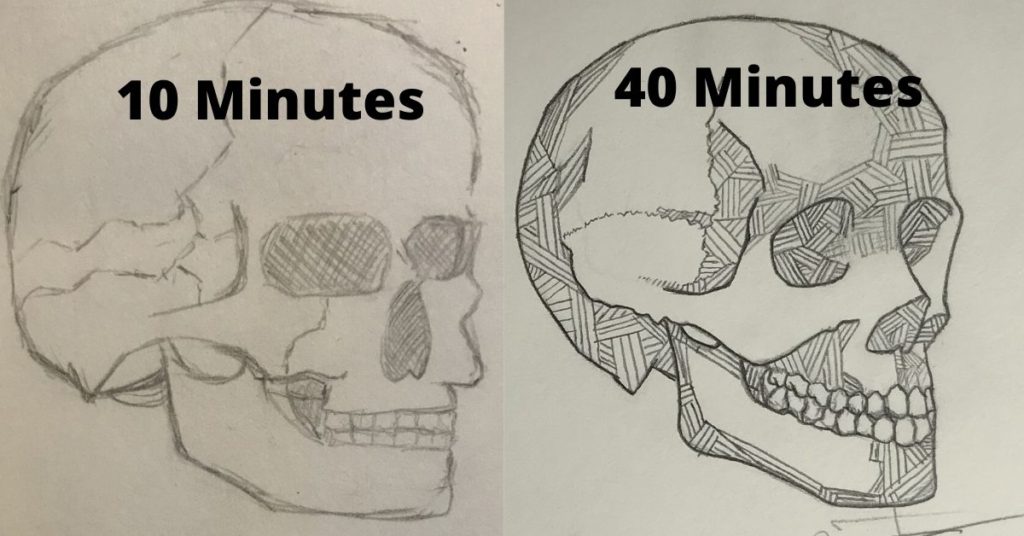
Not to mention you would typically start a drawing by sketching it first. The time it takes you to create the sketch is usually far shorter than the time it takes you to make a full, complete drawing. The times are very far apart due to these three main factors:
- You don’t generally put a lot of thought into sketching stokes the same way you do to a “serious” stroke. For example, if you were to draw a circle, the most common thing is to sketch it using many curved lines until you find the right curvature and then make the defined stroke. (I explain how to draw circles more easily in this blog if you’re curious)
- Defined strokes, shading, coloring, and details don’t correspond to sketching but drawing. With enough experience, you’ll be able to sketch any subject you like ten times faster than drawing it.
- You can make more mistakes when sketching than when drawing. Usually, sketching doesn’t require you to frequently erase your strokes but rather use them as a reference for the rest of the strokes. You’re mainly experimenting and capturing the essence of the illustration. On the contrary, every stroke you make when drawing must be accurate, so you would have to erase more regularly if the line doesn’t look as you desire.
Some people draw more detailed sketches, but keep in mind that the more detail a sketch has, the more close it is to be a complete drawing.
4- Sketches Are Smaller Than Drawings
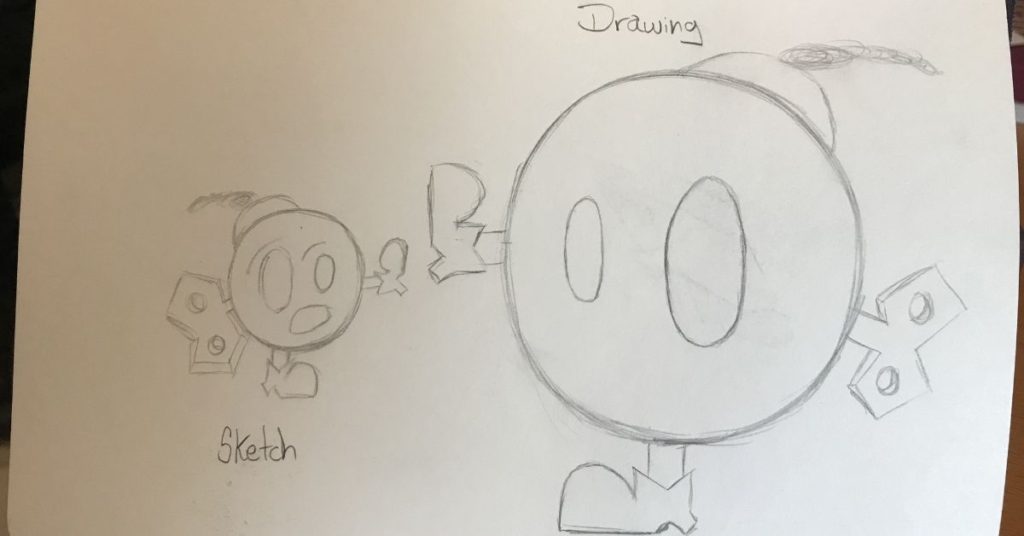
Another way sketches and drawings are different is that artists tend to draw a subject on a smaller scale before drawing it for real on a bigger one. This exercise helps us familiarize ourselves with proportions, shapes, and the overall understanding of what we’re drawing, especially with elaborate drawings.
How often you put this exercise into practice depends on your skill level. There is a drawing style called Hyperrealism, and it most of the time requires the artist to have a lot of space available due to the level of detail he needs to add. When you draw something on such a big scale, the time it takes you to finish the piece is very extensive, and it may be easy to overlook mistakes, which can make you lose a lot of time. But if the artist first sketches it on a smaller scale, there’s a big chance he will avoid any potential mistakes.
5- Sketches Use Fewer Drawing Tools Than Drawings
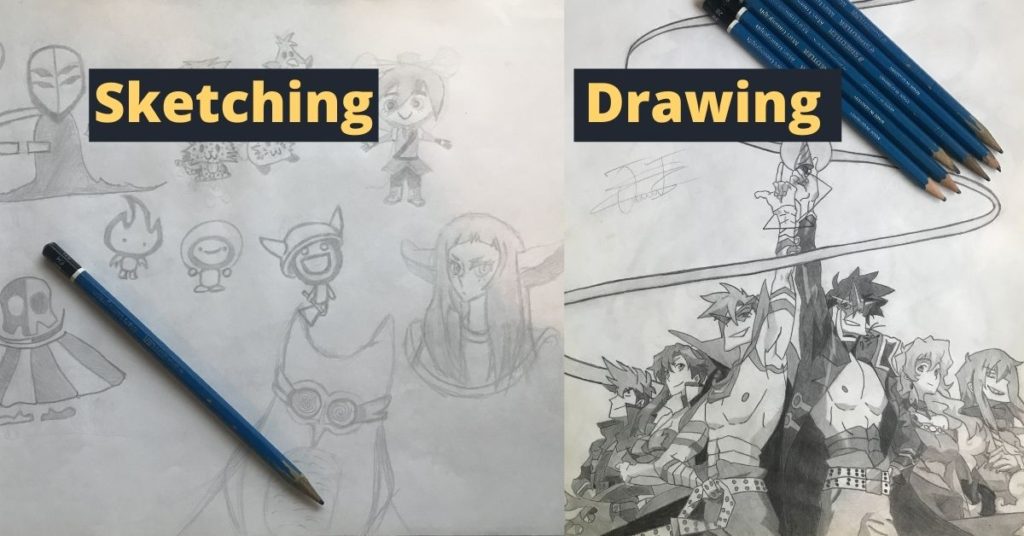
Sketches and drawing have very different levels of detail because of the time it takes you to create them and the number of tools you use for each of them.
When you sketch, you’re supposed to use graphite pencils or charcoals only. Since a sketch intends to just stroke preliminary lines for the real drawing, you would generally use only one pencil. In some cases, you may use compasses, rulers, grids, and erasers, of course. That would be a total of six tools available for sketching.
However, when you draw, the number of tools you have at your disposal is immense. Not only do you have the tools we mentioned above, but you also have pencils of different shades to add more value to your drawings. Besides that, sketches are not supposed to have any color, but drawings can have them, so colors and watercolors are other tools you can add to a drawing.
Just adding one thought: I do consider sketches can be finished pieces of art and that any artist can decide how they look like because it all depends on interpretation. But for the means of explaining their differences, a sketch is always something less elaborate than a drawing, which is why drawings tend to be more detailed.
6- There Are More Types Of Drawing Than Sketching
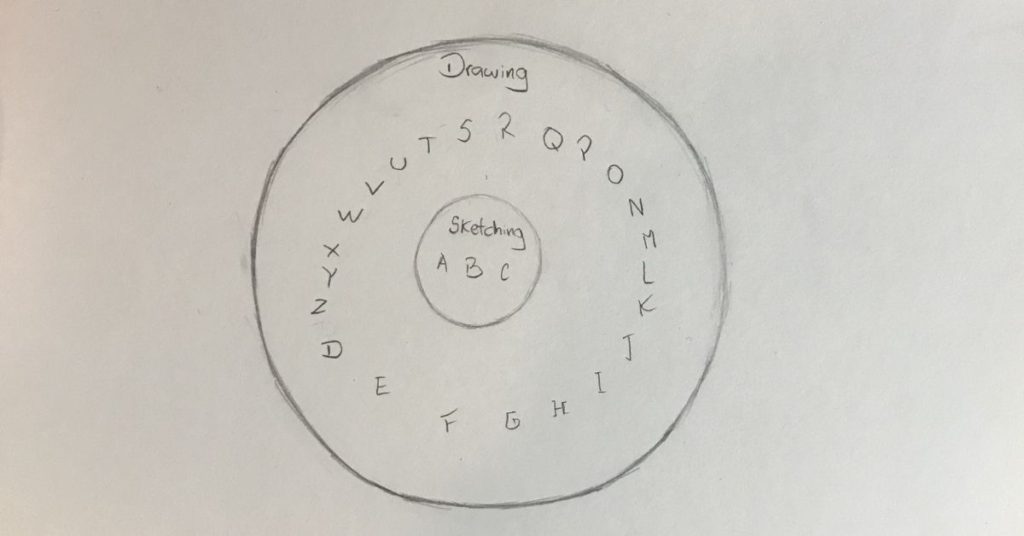
Another difference between drawing and sketching is the number of styles there are for each method. On one side, sketching has three main styles:
1- Croquis sketching
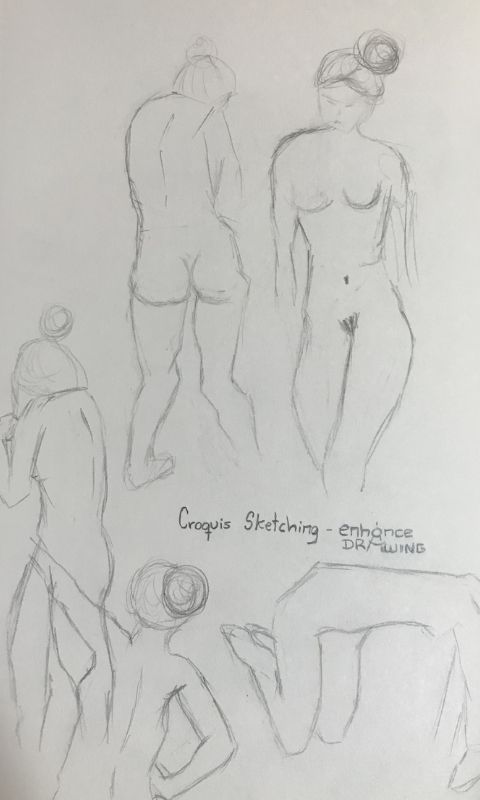
This sketching style focuses on drawing a shape as fast as possible. When practicing this exercise, you would typically draw a figure in less than 2 minutes. It intends to give you an overall understanding of the subject you’re drawing, and artists practice this the most with live models.
2- Pochade sketching
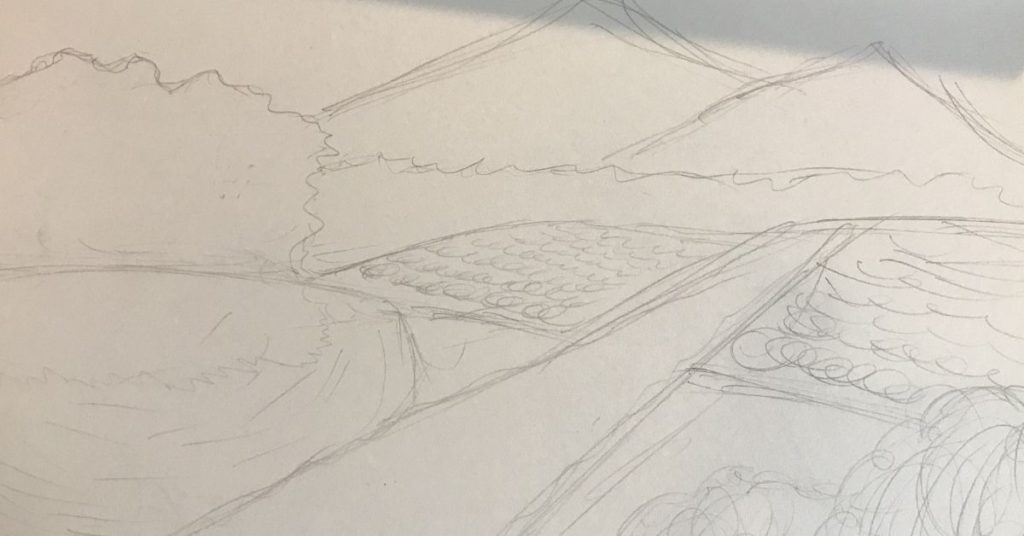
This sketching style focuses on drawing the essence of a background you want your drawing to have. These types of sketches are done quickly. If you have never tried this before, you can look for reference pictures and sketch the primary lines so you can add backgrounds to your drawings with more detail later on.
3- Portrait sketching
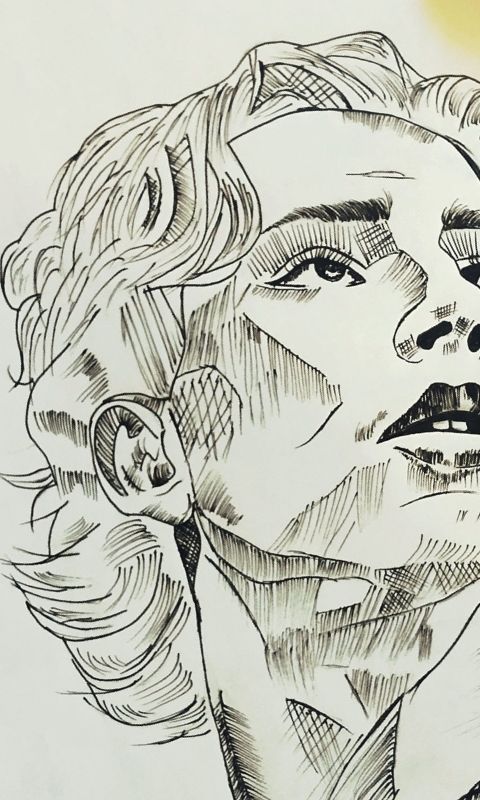
This sketching style focuses on drawing people’s faces. Artists usually spend more time creating these sketches to make sure they capture the primary lines that make the person they’re drawing unique. The more details you add to the sketch, the closer it will be to a real portrait drawing.
On the other side, drawing has all drawing styles at its disposal. I’ve put together a blog with a complete list of all main drawing styles, in case you’re curious.
7- Sketching Is Studying, Drawing Is Representing
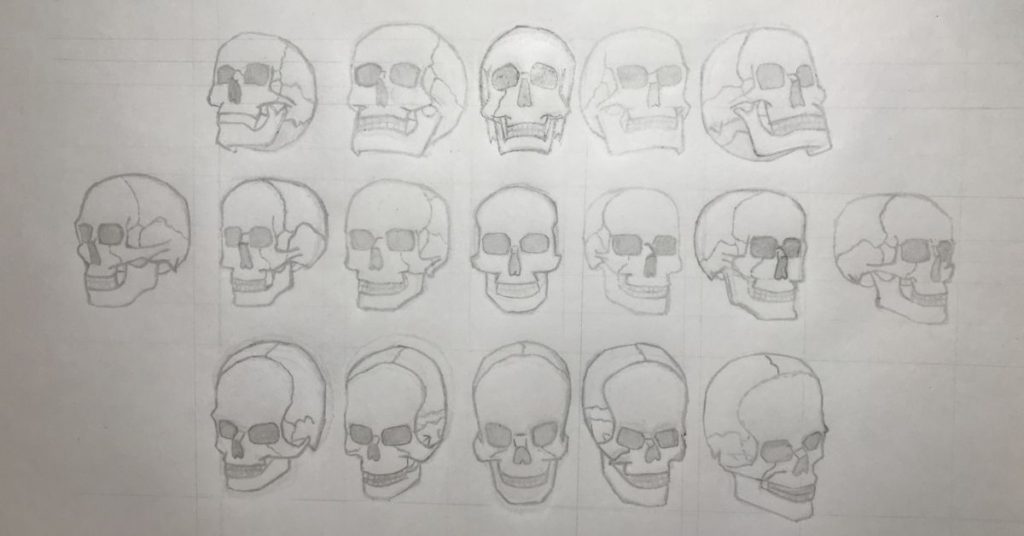
This difference is a big one between these two methods. One of the main ways artists get better at drawing is by studying many different subjects and understanding how to represent them.
Generally, artists would find many references of the subject they want to study and start sketching it several times until drawing it comes naturally to them. We sketch it first because we can illustrate the subject many more times than drawing it.
This sketch is how Leonardo da Vinci studied fetuses.
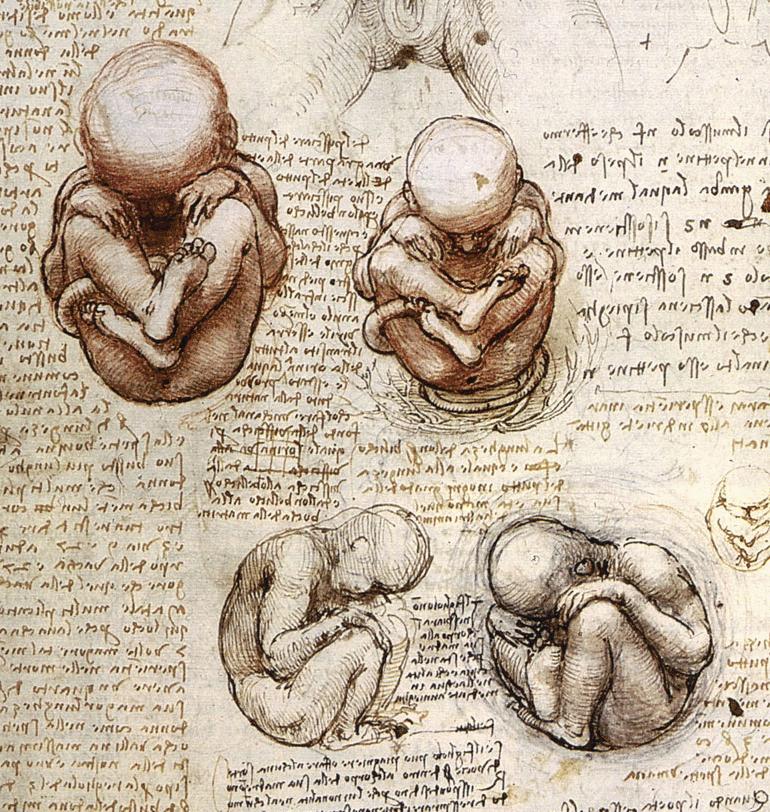
Once you have a deep understanding of the subject, you then draw it with all the details and represent it to the best of your abilities. After that, you analyze your drawing and see if there’s something else you can improve, and draw it again until you reach your goal. If you sketched the subject enough times, this last process shouldn’t take too many tries to get the desired result.
8- Sketches Are Incomplete – Drawings Are Complete
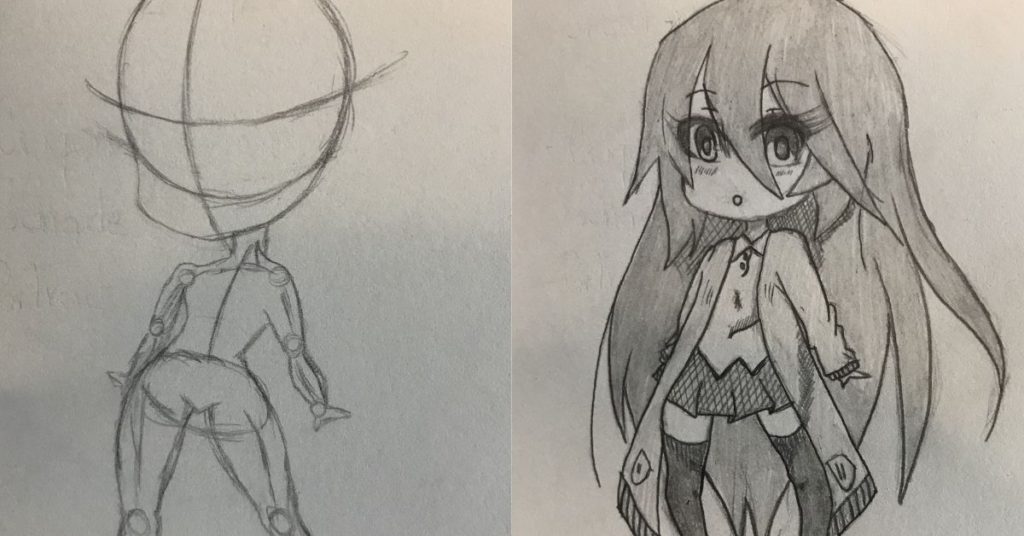
More often than we would like it to be, many of our sketches never see the light again and remain incomplete. It is common for artists to have tons of unfinished sketches for various reasons:
- They didn’t like the result and tried something else.
- The subject they sketched didn’t interest them that much.
- They were studying a subject.
- Or they just didn’t have the time to finish it.
And we can continue adding reasons to the list, but the truth is that they are not completed. However, if we give the illustration a drawing status, we’re talking about a finished piece of art. These drawings have more defined lines, shading, colors, and small details that them unique compared to a simple sketch.
9- Sketching Is Casual, Drawing Is Serious
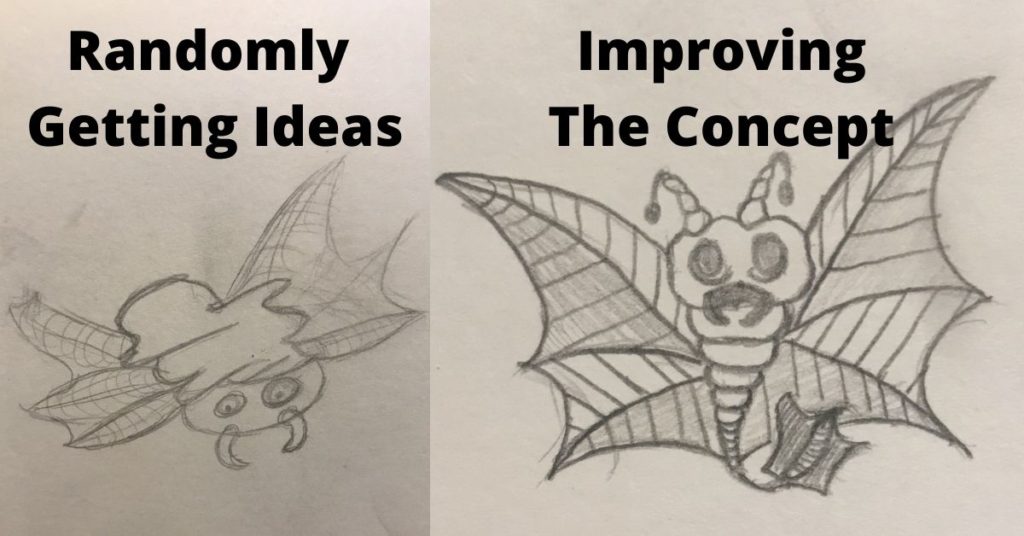
Another big difference between drawing and sketching is how you approach each method. Many of us artists carry a sketchbook with us everywhere we go and draw scenarios of what interests us. Just like a photographer would do with a camera. Sometimes you get new ideas, and you want to translate them to paper or just sketch for the sake of it.
On the other side, drawing is something we do with extra attention. Usually, drawing comes with a clear objective, and every stroke you draw has a meaning and intention behind it. Drawing feels more like a plan, and sketching more like something spontaneous.
Of course, all artists will have their particular ways to approach each method, and they can be deadly serious when sketching. Still, according to every artist I’ve met, the way they see sketching is precisely, or very similar, to what I explained above.
10- Sketching Is Lighter, Drawing Is Darker
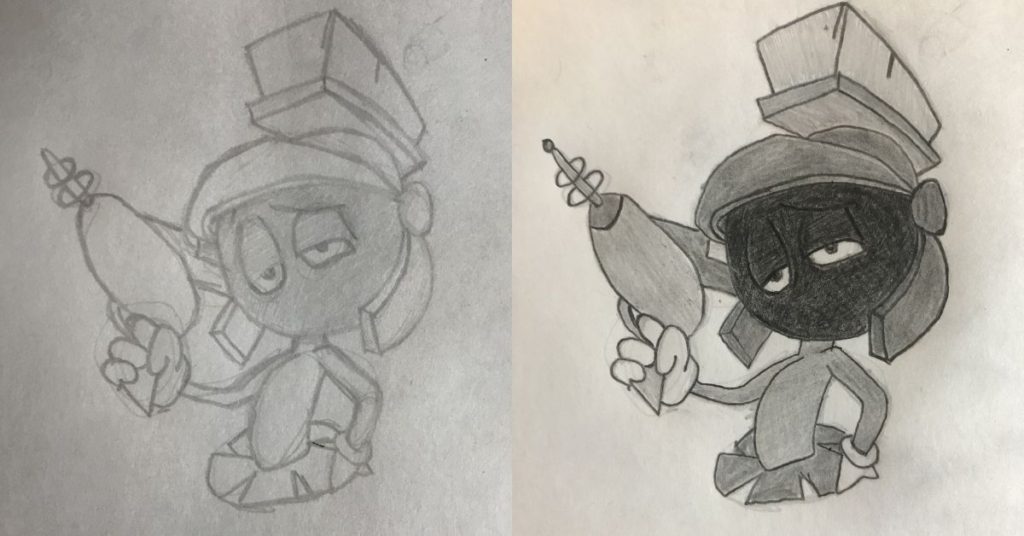
Another difference you can see when you sketch something vs. drawing is how light and dark they are compared. The main goal of a sketch is to replace all those loose strokes for more precise, defines lines. If you draw them hard, it will be hard to erase them. And that also applies when using a very dark-shaded pencil.
Here’s a picture of how a sketch would look compared to a finished drawing.

The first one is drawn more loosely and mainly to get the basic idea of the composition. You can see how the lines aren’t that dark. And now, let’s see the more seriously-drawn skull.
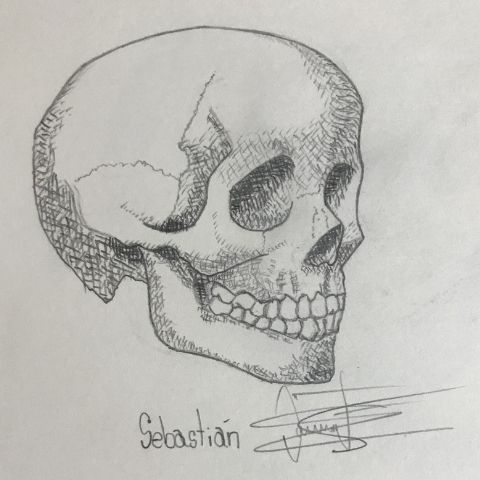
As you can see, the tone differentiation is pretty noticeable. I used more strength in every stroke because I already knew what I was drawing, so the result is a darker-shaded drawing.
In case your goal is to leave the drawing as a sketch, and you just want to use some dark lines to make it better, you can definitely do it. Using dark lines on a sketch is not forbidden, nor a bad thing. Just be careful when you go for the stroke and try your best to make sure the line looks well. Knowing how to stroke lines the way you imagine them comes with experience, and you’ll get better at that over time.
11- You Draw And Sketch In Different Papers
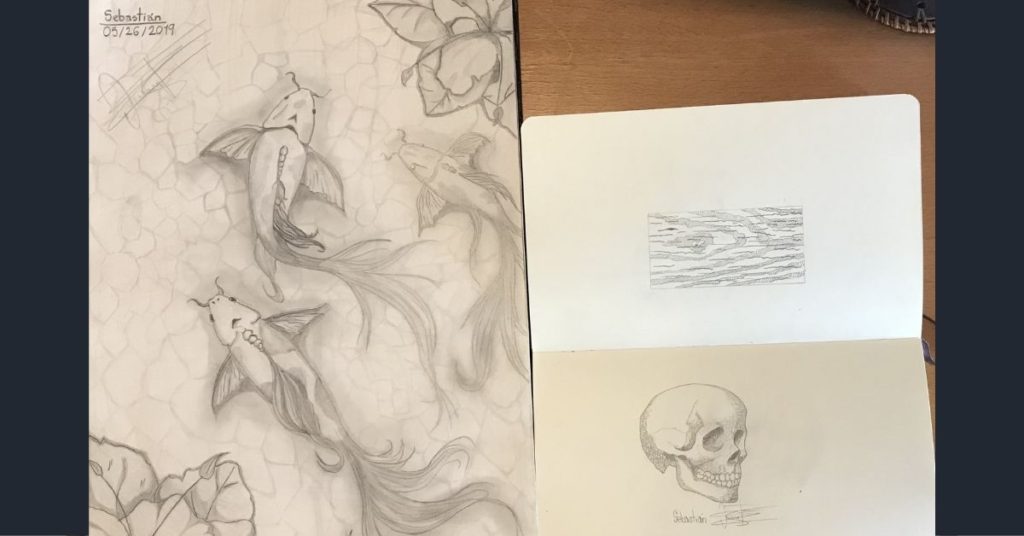
The final difference between drawing and sketching we will talk about in this blog is the different materials artists generally use for each drawing method. I don’t know if you’re aware of this, but drawing books and sketchbooks are not the same. There are two different drawing books because sketches are usually done on cheap papers, while drawings are done in more refined papers.
Overall, sketchbooks offer a good quality paper, but not a premium one. And most of them are smaller than drawing books. The good thing about sketchbooks is that they’re cheaper and come with many pages. If we now talk about drawing books, most options offer higher quality papers, usually thicker than sketchbook papers. These drawing books come in a wide variety of sizes, but they’re more expensive than sketchbooks. I will write a blog comparing these two soon!
So there you have it, eleven differences between drawing and sketching. I hope that cleared your question.
Happy drawing!
